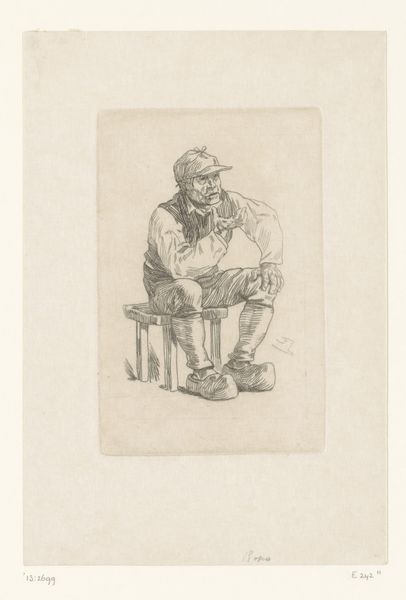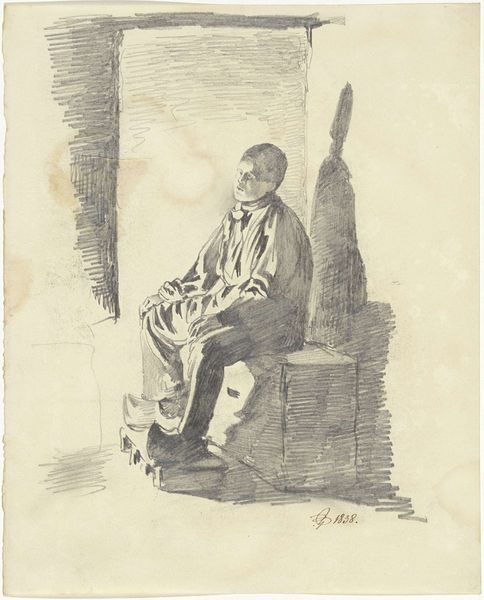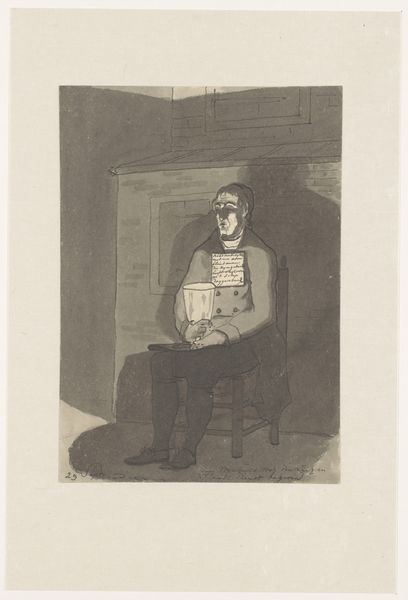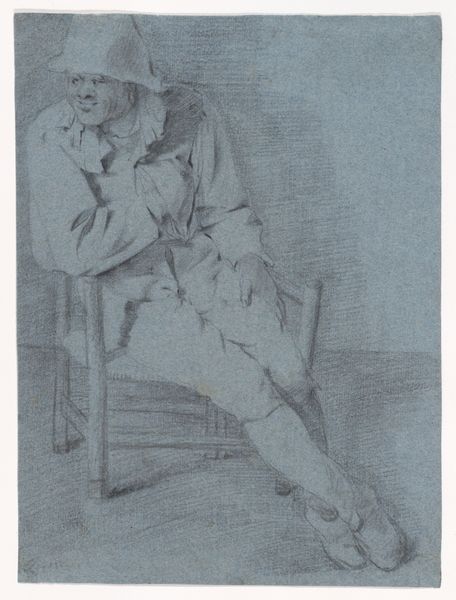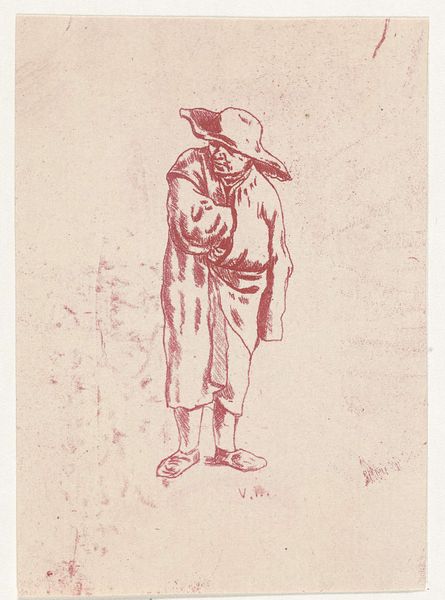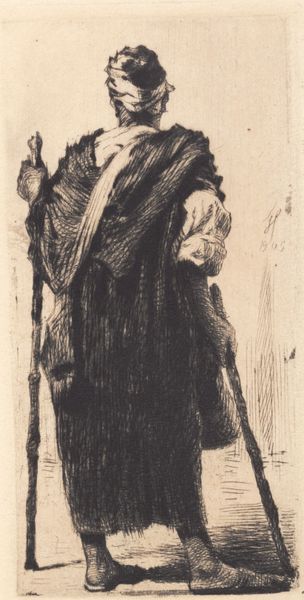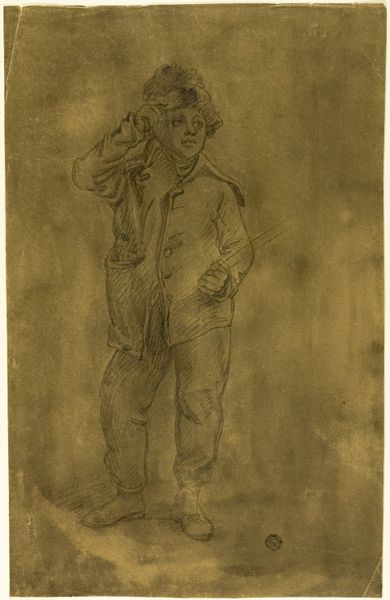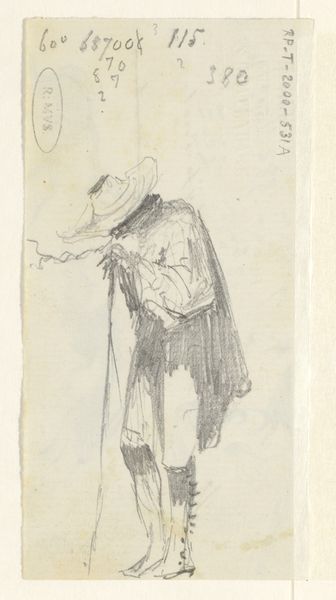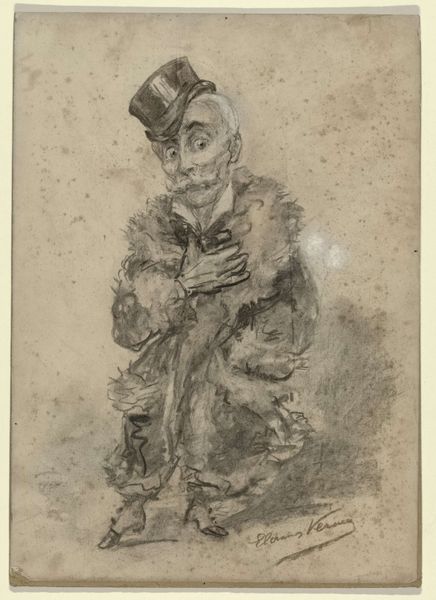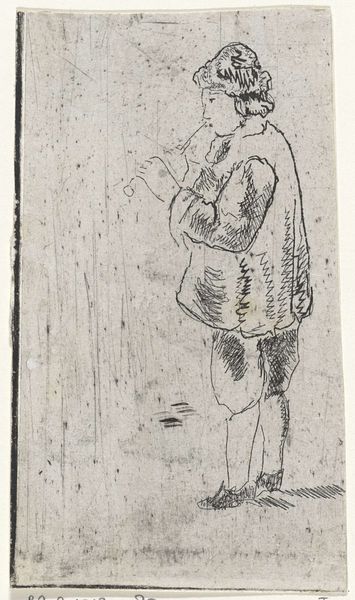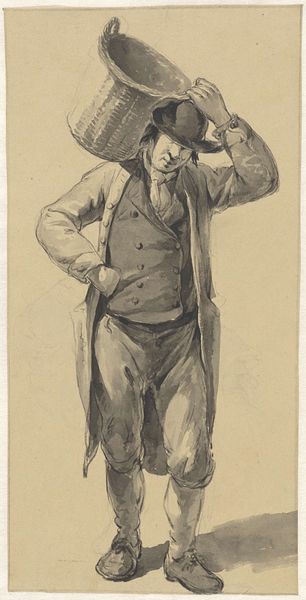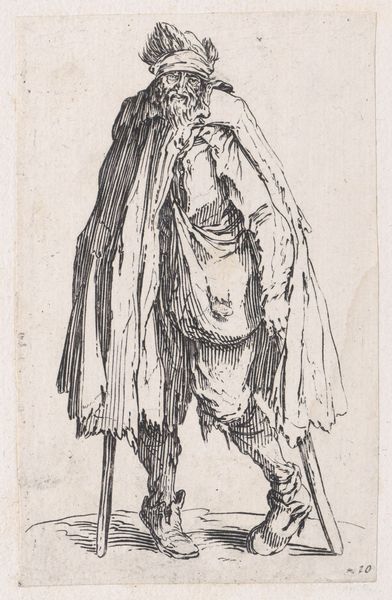![Man Holding a Book [recto] by Thomas Sully](/_next/image?url=https%3A%2F%2Fd2w8kbdekdi1gv.cloudfront.net%2FeyJidWNrZXQiOiAiYXJ0ZXJhLWltYWdlcy1idWNrZXQiLCAia2V5IjogImFydHdvcmtzLzcwODFiOTM5LWQ2Y2QtNDFlOS1hOGRiLTVhOWEzNWQ4NGZlOC83MDgxYjkzOS1kNmNkLTQxZTktYThkYi01YTlhMzVkODRmZThfZnVsbC5qcGciLCAiZWRpdHMiOiB7InJlc2l6ZSI6IHsid2lkdGgiOiAxOTIwLCAiaGVpZ2h0IjogMTkyMCwgImZpdCI6ICJpbnNpZGUifX19&w=3840&q=75)
drawing
#
portrait
#
drawing
#
caricature
#
portrait drawing
#
academic-art
Dimensions: sheet: 22.23 × 15.24 cm (8 3/4 × 6 in.)
Copyright: National Gallery of Art: CC0 1.0
Editor: Here we have Thomas Sully's drawing "Man Holding a Book", made around 1815. It’s quite simple, really, just shades of gray. I find it oddly melancholic, yet intimate at the same time. What do you see in this piece, something beyond just a man with a book? Curator: Absolutely. We need to look at this portrait through a broader lens. It's not simply a man holding a book, it is about the very idea of literacy and its power, especially during Sully's time. Consider who had access to books, to education? The image becomes a quiet statement about class and intellectual access. Is the man truly reading or just posturing? How might gender affect how this image is received? Editor: That's fascinating. I hadn’t thought of it that way. It adds another layer, knowing the societal limitations on education. So the book isn't just an object, but a symbol. Curator: Precisely! What else do you observe about the sitter’s overall posture and expression that could speak to socio-political implications? Consider the context: what sociopolitical movements marked the late 18th and early 19th centuries in the Western World? Could he be a politician or an aristocrat who feels alienated? Does the backdrop suggest isolation? How does the artist employ shading? Is that meant to elicit a mood of power, class privilege or rather some mood associated to vulnerability and oppression? Editor: I see what you mean. His pose seems almost…resigned. And those dark tones contribute to a sense of unease. It is more complex than just a straightforward portrait. It makes you consider the politics of the time, for the figure, and even for Sully, a European immigrant who went on to become the 'face' of American painting. I see now how crucial context is! Curator: Indeed. Art isn't created in a vacuum. Understanding these social forces transforms our experience and gives voice to marginalized histories and unheard narratives. Always contextualize to analyze art's intersectional position within broader narratives.
Comments
No comments
Be the first to comment and join the conversation on the ultimate creative platform.
